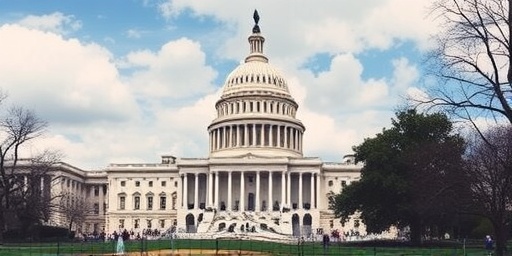In a high-stakes standoff that’s gripping Washington, congressional leaders are locked in a fierce debate over extending key Affordable Care Act subsidies, with the clock ticking down to their expiration at the end of the year. This gridlock threatens to upend healthcare access for over 20 million Americans, driving up insurance costs and injecting uncertainty into the U.S. economy just as families prepare for the open enrollment season.
Expiring ACA Provisions Spark Nationwide Alarm
The Affordable Care Act, often dubbed Obamacare, introduced enhanced premium tax credits in 2021 as part of pandemic relief measures under the American Rescue Plan. These healthcare subsidies have been a lifeline, capping monthly insurance premiums at 8.5% of income for many low- and middle-income households. Without renewal, experts warn that average premiums could surge by as much as 75% in 2025, according to a recent analysis from the Kaiser Family Foundation.
Currently, these subsidies cover about 80% of enrollees in the ACA marketplaces, helping to stabilize enrollment at record highs of 21.3 million in 2024. The program’s success has been evident in states like California and New York, where participation has soared, reducing the uninsured rate to historic lows of 7.7% nationwide. However, the impending sunset clause—tied to temporary COVID-19 era expansions—has ignited urgent calls for action from healthcare advocates.
“These subsidies aren’t just numbers on a page; they’re preventing financial ruin for working families,” said Dr. Elena Ramirez, president of the American Public Health Association. Her organization has mobilized grassroots campaigns, urging senators to prioritize extension amid the partisan fray. The stakes are particularly high for rural communities, where 40% of ACA plans could become unaffordable without federal support, per a report from the Rural Health Research Program.
Partisan Battles in Congress Stall Critical Legislation
Congress’s inability to bridge divides has turned what should be a routine extension into a political battleground. Republicans, led by House Speaker Mike Johnson, argue that the subsidies inflate federal spending, projecting an additional $335 billion over the next decade if extended through 2031, as estimated by the Congressional Budget Office. They demand offsets, such as cuts to other social programs or reforms to the ACA’s structure, including work requirements for able-bodied adults.
Democrats, spearheaded by Senate Majority Leader Chuck Schumer, counter that such demands are non-starters, emphasizing the subsidies’ role in averting a healthcare crisis. “We’re talking about real people—nurses, teachers, small business owners—who rely on these healthcare subsidies to stay healthy and productive,” Schumer stated during a recent floor speech. Bipartisan talks, facilitated by the Senate Finance Committee, have yielded little progress, with the latest round collapsing over disagreements on funding mechanisms.
The deadlock is exacerbated by broader fiscal tensions, including the debt ceiling and upcoming budget reconciliation. Last year’s failed attempt to attach the extension to a must-pass omnibus bill has lawmakers scrambling for alternatives, such as standalone legislation or rider amendments. Political analysts point to midterm election dynamics, where healthcare remains a flashpoint: polls from Gallup show 55% of voters favor expanding ACA protections, pressuring both parties to avoid blame for any lapse.
- Key sticking points: Republican push for subsidy caps versus Democratic calls for permanence.
- Recent votes: A House procedural motion on ACA tweaks failed 212-210 along party lines.
- Upcoming deadlines: Senate markup sessions scheduled for mid-November.
Inside the Beltway, whispers of compromise circulate—perhaps tying extensions to drug price negotiations—but optimism remains tempered by historical precedents, like the 2017 repeal efforts that nearly dismantled the Affordable Care Act.
Insurance Market Volatility Looms as Premiums Climb
The insurance industry is bracing for turbulence, with major carriers like UnitedHealth and Anthem signaling potential rate hikes if Congress fails to act. Without the enhanced subsidies, marketplace instability could lead to a 10-15% drop in enrollment, according to projections from the Urban Institute, forcing insurers to adjust risk pools and pass costs to consumers.
In 2024, the average unsubsidized premium for a benchmark silver plan stands at $456 monthly, but subsidies have shielded most buyers from the full brunt. Post-expiration, a family of four earning $80,000 annually could see costs jump from $300 to over $700 per month, per calculations from the Commonwealth Fund. This scenario echoes pre-2021 trends, when premium growth averaged 20% annually before the relief measures kicked in.
State-level responses vary: Blue states like Massachusetts are exploring emergency funds to mitigate impacts, while red states like Texas face steeper challenges due to limited Medicaid expansion. Insurers are already hedging bets; Blue Cross Blue Shield Association CEO Scott Serota noted in a CNBC interview, “Uncertainty like this disrupts planning—we’re looking at revising 2025 filings upward by double digits if no deal emerges.”
Small businesses, often reliant on ACA exchanges for employee coverage, are particularly vulnerable. A survey by the National Federation of Independent Business found 62% of owners worry about cost increases eroding profit margins, potentially leading to job cuts or reduced benefits. The ripple extends to providers: hospitals in underserved areas could see uncompensated care rise by $50 billion annually, straining an already fragile system.
Economic Shadows Cast Over U.S. Growth and Workforce
Beyond healthcare, the subsidy impasse poses broader threats to the U.S. economy, where healthcare spending accounts for 18% of GDP. Economists at Moody’s Analytics forecast that lapsed subsidies could shave 0.2-0.5 percentage points off GDP growth in 2025, driven by reduced consumer spending and productivity losses from untreated illnesses.
The Affordable Care Act’s framework has contributed to economic resilience; studies from the Brookings Institution link expanded coverage to a 1.5% boost in labor force participation since 2014, as healthier workers stay employed longer. Without subsidies, this progress risks reversal: an estimated 4 million could lose coverage, per the Center on Budget and Policy Priorities, fueling wage stagnation and increasing reliance on emergency services.
Wall Street is taking notice—healthcare stocks dipped 2% last week amid gridlock news, with ETFs tracking insurers underperforming the S&P 500. “This isn’t just a policy debate; it’s an economic time bomb,” warned Yale economist Dr. Marcus Hale in a Wall Street Journal op-ed. He highlighted parallels to the 2013 ACA rollout glitches, which temporarily slowed hiring in service sectors.
Broader implications include inflationary pressures: higher out-of-pocket costs could curb discretionary spending, affecting retail and manufacturing. The Federal Reserve has flagged healthcare volatility as a watchpoint in its latest minutes, noting potential upward ticks in core inflation if premiums spike. For the U.S. economy, already navigating post-pandemic recovery, this congressional logjam underscores the fragility of intertwined fiscal and health policies.
Looking ahead, the White House is ramping up pressure through public briefings, with President Biden warning of “catastrophic consequences” in a recent address. Bipartisan working groups in the House Energy and Commerce Committee are set to reconvene next week, aiming for a framework by Thanksgiving. If successful, a slimmed-down bill could pass via reconciliation, sidestepping filibuster hurdles. Failure, however, might force states into patchwork solutions or delay relief until 2026, prolonging uncertainty for insurers, families, and the economy at large. As negotiations heat up, the fate of these vital healthcare subsidies hangs in the balance, with millions watching closely for signs of breakthrough.









